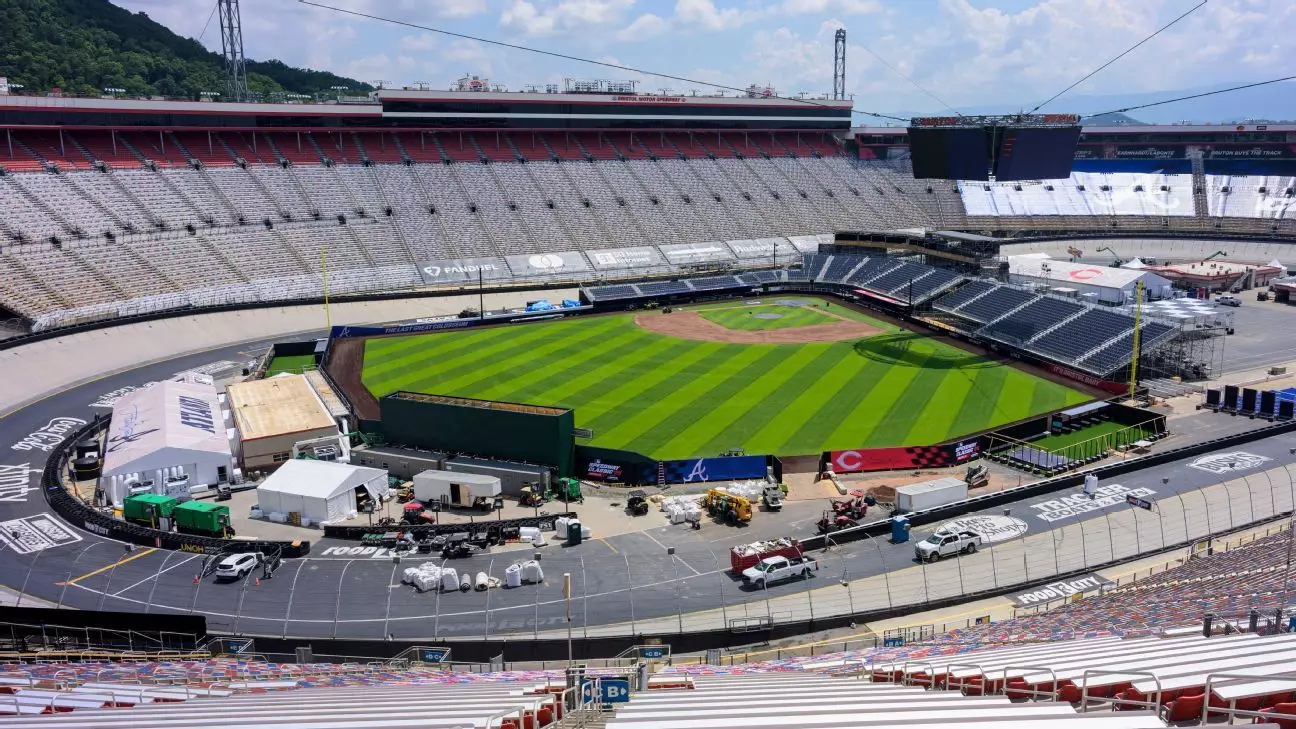Bristol Motor Speedway’s recent transformation stands as a testament to ingenuity and adaptability. Historically known as “The Last Great Colosseum,” this venue has earned a reputation for hosting some of sports’ most electrifying events, especially its recent record-breaking Major League Baseball game. Yet, what is truly remarkable is the speed and precision with which the track morphs from a baseball playground back into a roaring NASCAR circuit. This duality exemplifies not just logistical capability, but a broader philosophy of leveraging space for multiple sports — a bold statement on the evolution of large-scale entertainment venues.
The transition from an MLB diamond to a racing track is a formidable feat that showcases engineering prowess mixed with strategic planning. Every detail, from constructing temporary clubhouses to leveling the terrain with thousands of tons of gravel, underscores the complexities involved. It is not merely about converting space but about re-engineering a site that can seamlessly switch from one intense sport to another, maintaining standards of safety, comfort, and spectacle. This process reflects a mindset that embraces challenge as an opportunity to innovate — a trait that distinguishes forward-thinking sports infrastructure.
Race Against Time: The Challenge of Fast-Paced Turnarounds
Speed is at the core of Bristol’s recent efforts. The timeline is tight — with a targeted finish around September 7, just days ahead of the upcoming NASCAR playoff race. For a venue of this magnitude, that window is a sprint, not a marathon. Every phase, from tearing down baseball fixtures to creating a brand-new racing surface, must be executed with precision and urgency.
What makes this even more striking is the meticulous planning behind it. Utilizing over 17,000 tons of gravel to craft a level infield and adding hundreds of tons of Pennsylvania clay reveals the detailed craftsmanship necessary to meet racing standards. Pouring and curing concrete walls, dismantling and reinstalling grandstands, and reconstructing pit walls are all tasks executed within an exceptionally constrained timetable, demanding a level of coordination that borders on the extraordinary. This is not merely code for “efficiency” but an illustration of committed mastery over logistics.
The staff’s willingness to work tirelessly through the night and the use of salvaged materials — including debris repurposed for hurricane relief efforts — reveal a commendable commitment to community and sustainability. It embodies a broader ethos: that facilities are adaptable ecosystems capable of serving multiple purposes while also contributing positively to the surrounding community.
Reimagining Multifunctional Sports Venues for the Future
Bristol’s ability to host a record-breaking baseball game, and potentially entertain NHL events, suggests that the future of sports venues lies in multifaceted designs. This adaptability not only maximizes ROI but also enriches a community’s cultural landscape, allowing it to host diverse events that draw different audiences.
The recent MLB game, which attracted over 91,000 spectators, exemplifies that large-scale, unique sporting experiences are highly feasible, even in unconventional settings like a racetrack. It challenges traditional notions of what a sports venue can be, advocating for flexible infrastructure that can pivot quickly from one event type to another. Bristol’s experience becomes a blueprint for other venues worldwide seeking to diversify and elevate their appeal.
By demonstrating success in accommodating baseball, football, and potentially hockey, Bristol sets a precedent: the modern sports arena must be versatile, resilient, and ready for rapid transformation. This approach not only capitalizes on existing assets but also fosters innovation, pushing the boundaries of how sports are experienced and hosted.
The skepticism often associated with such complex transformations is likely to be replaced by admiration for the boldness and precision required to execute them. Bristol’s experience highlights that embracing change, even within strict timeframes and logistical constraints, is essential to stay relevant in an increasingly competitive sports entertainment industry. The venue’s story underscores an unwavering commitment to pushing the limits, transforming challenges into opportunities, and ultimately redefining what it means to be a multifunctional sports hub.

